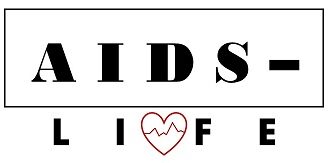Highly active antiretroviral therapy for HIV. HAART drugs and regimens
What is HAART?

HAART refers to any HIV treatment that uses a combination of 2 or more drugs. Also, the doctor may prescribe a combination of 3 or more drugs to increase the chances of treatment success.
Highly active antiretroviral therapy (HAART) is also sometimes called combination antiretroviral therapy or antiretroviral therapy. Experts introduced HAART in 1996 due to low success rates among those taking only one HIV drug at a time.
The introduction of three-drug antiretroviral treatment marked a turning point in the history of HIV treatment. A new approach to treatment has transformed HIV from a diagnosis with a very poor prognosis into a manageable condition.
HAART has a dual effect on the body. On the one hand, it increases the number of immune cells, on the other hand, it reduces the number of viral cells present in the body.
Benefits of HAART
The advantages of HAART are that it:
- stops the multiplication of HIV in the blood;
- reduces viral load :
- increases the number of CD4 cells (the body's immune cells that HIV destroys) to improve immune system function;
- slows down and prevents the development of AIDS (stage 3 HIV);
- prevents the risk of infecting other people with HIV;
- reduces the severity of complications and increases life expectancy;
- maintains low levels of virus in the blood.
When prescribing antiretroviral therapy, doctors typically use a regimen of three or more drugs to increase the likelihood of lowering the level of HIV in the body. However, it is possible to prescribe one drug containing several drugs.

According to the WHO, HAART can reduce the viral load to the point that it is undetectable in the blood. This means that a person can no longer transmit the virus to another person, even through unprotected sex. This concept is called: indefinable = incommunicable.
Also, WHO recommends that people with HIV take antiretroviral drugs regardless of their health status or other factors. When a person with HIV uses HAART as directed by their doctor, their chances of living a full and healthy life are greatly increased.
HAART drugs and regimens for HIV
There are 7 main groups of HIV drugs. These include:
- non-nucleoside reverse transcriptase inhibitors (NNRTIs);
- nucleoside reverse transcriptase inhibitors (NRTIs);
- post-attachment inhibitors;
- protease inhibitors (PI);
- CCR5 antagonists;
- integrase transfer inhibitors (INSTIs);
- fusion inhibitors.
Initial treatment regimens usually include 2 NNRTI drugs in combination with a third active antiretroviral drug, which may be INSTI, NNRTI, or PI. Sometimes they may include a booster, such as: Cobicistat or Ritonavir .

The initial HAART regimen for adults and adolescents with HIV usually looks like this:
- Bictegravir / Tenofovir Alafenamide / Emtricitabine;
- Tivicay + Tenofovir / Emtricitabine;
- Raltegravir (Isentress) + Tenofovir / Emtricitabine;
- Abacavir / Dolutegravir / Lamivudine (not suitable for people with genetic sensitivity to Abacavir).
Once a doctor prescribes an effective treatment regimen for a particular patient, it takes approximately 3–6 months for the viral load to reach undetectable levels.
For HAART to be effective, a person must take the medications exactly as prescribed by the doctor. Avoid missing doses or stopping medications for any period of time. Compliance with the regimen will prevent HIV from multiplying in the blood and affecting the immune system. Therefore, when discussing the most appropriate treatment regimen, talk to your doctor about any difficulties you may have with taking your medications.

When choosing a HAART regimen for each patient, the doctor will take into account the following points:
- the presence of any diseases;
- pregnancy;
- possible side effects of HIV medications;
- possible interactions between HIV medications and other medications the person is taking;
- cost of drugs;
- a person's ability to adhere to medication regimen.




